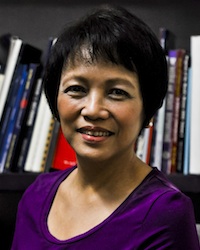SUMMARY
This is AI generated summarization, which may have errors. For context, always refer to the full article.

What is it about the multi-billion peso Disbursement Acceleration Program or DAP that has united groups, representing the spectrum of political forces, against it?
In the first round of oral arguments before the Supreme Court on Tuesday, November 19, petitioners ranged from the Right, represented by a former presidential counsel of dictator Ferdinand Marcos and unabashed Marcos loyalist, to the Left, the Bayan Muna party-list group. In between were the Integrated Bar of the Philippines and other citizen groups.
Their common denominator? All of them wanted the Court to declare DAP unconstitutional.
Questions from some of the justices showed that the problem had to do with the nature of the beast. It wasn’t so much the purpose of the fund, which was to stimulate the economy in the face of sluggish spending by government, but how it was cobbled together.
DAP does not appear as an item in the national budget or the General Appropriations Act (GAA), which is a law, but rather, it is sourced from various sources such as savings and unprogrammed funds and pooled into a basket of funds.
The petitioners said the Constitution is clear: “No money shall be paid out of the Treasury except in pursuance of an appropriation made by law.”
Justice Antonio Carpio was the most pointed. He said that savings, as defined by the GAA, are excess funds from completed projects, discontinued projects, and those from finally abandoned projects.
But there’s a “twist” here, he continued. The life span of operating expenses and capital outlay, as prescribed by the GAA, is 2 years. So the government can only abandon, say, an infrastructure project when the 2nd year is about to end. Definitely, Carpio stressed, the budget department cannot declare these as savings in the 1st year of the GAA.
The worse part, he said, was the absence of written authority from the President, in 2011 and 2013, to realign funds. “This cannot be delegated to the executive secretary,” he added. The budget circular on DAP was issued in 2012 and it “regularized” the disbursements in 2011.
Romualdez connection
The justice in charge of the case, Lucas Bersamin, asked questions about the origins of DAP and, in the process, elicited revealing answers from Manuel Lazaro, counsel for the Philippine Constitutional Association (Philconsa), one of the petitioners. Ironically Philconsa, a forum to raise issues on the Constitution, morphed into a network of Marcos men. During martial law, Lazaro worked closely with Marcos and wrote some of the presidential decrees.
Bersamin: When did you know about DAP?
Lazaro: After Senator Jinggoy Estrada’s speech… [Congressman] Martin Romualdez called me about it. (Romualdez is Philconsa president, nephew of Imelda Marcos, and belongs to the opposition.) I then started research and met with [former Budget Secretary] Benjamin Diokno and [former national treasurer] Liling Briones.
* * *
Bersamin: Did you read DBM Circular 541? (This is the basis for DAP)
Lazaro: No. I just believed…
Under questioning from Bersamin, party-list Rep. Carlos Zarate, counsel for Bayan Muna, said that the proper process would be for Congress to pass a supplemental budget. He explained that no law authorizes the transfer of funds once the GAA is signed into law except when savings are used to augment items that have already been approved in the budget.
Premature, moot?
Justice Marvic Leonen raised 2 issues but these appeared not to have gotten traction among the justices.
First, the petitions may be premature because there is no “live case.” He said that, unlike PDAF, there are no official audit reports showing irregular disbursements of DAP. He dealt lengthily with this point while questioning Zarate who, however, could not complete his answers because Leonen kept firing him more questions.
What is it that you want us to strike down? Leonen asked. A concept? “We need specific acts which show violation of the Constitution,” he said.
Second, the case may be moot, after all, because Budget Circular 541 has not been extended.
Immediately after Leonen’s turn, Justice Jose Perez asked a few questions and concluded that there is “no need for an actual case to say that DAP is unconstitutional.” He also posed the possibility of excising parts of DAP that are questionable.
Carpio, for his part, asked Pacifico Agabin, counsel for the IBP: “When an executive official issues a circular, is that sufficient to go to court to prevent illegal disbursement of funds?” To which Agabin answered yes.
“There is no need to wait till money is disbursed,” Carpio continued. “Otherwise, the money will be gone.”
Commision on Audit chair, Grade Pulido-Tan, who appeared as an amicus curiae, told the Court that this practice of pulling out funds from various sources has been going on for years, since 2006. “This is nothing new,” she said, “only this time it’s called DAP.” In the past, it was called Reserve Control Account and Food Savings Account.
It looks like DAP will face rough sailing in court. Unlike the PDAF, it’s not a cut and dried issue and is not associated with corruption. But good intentions, like stimulating the economy, do need to hew to the rule of law. – Rappler.com
Add a comment
How does this make you feel?
There are no comments yet. Add your comment to start the conversation.